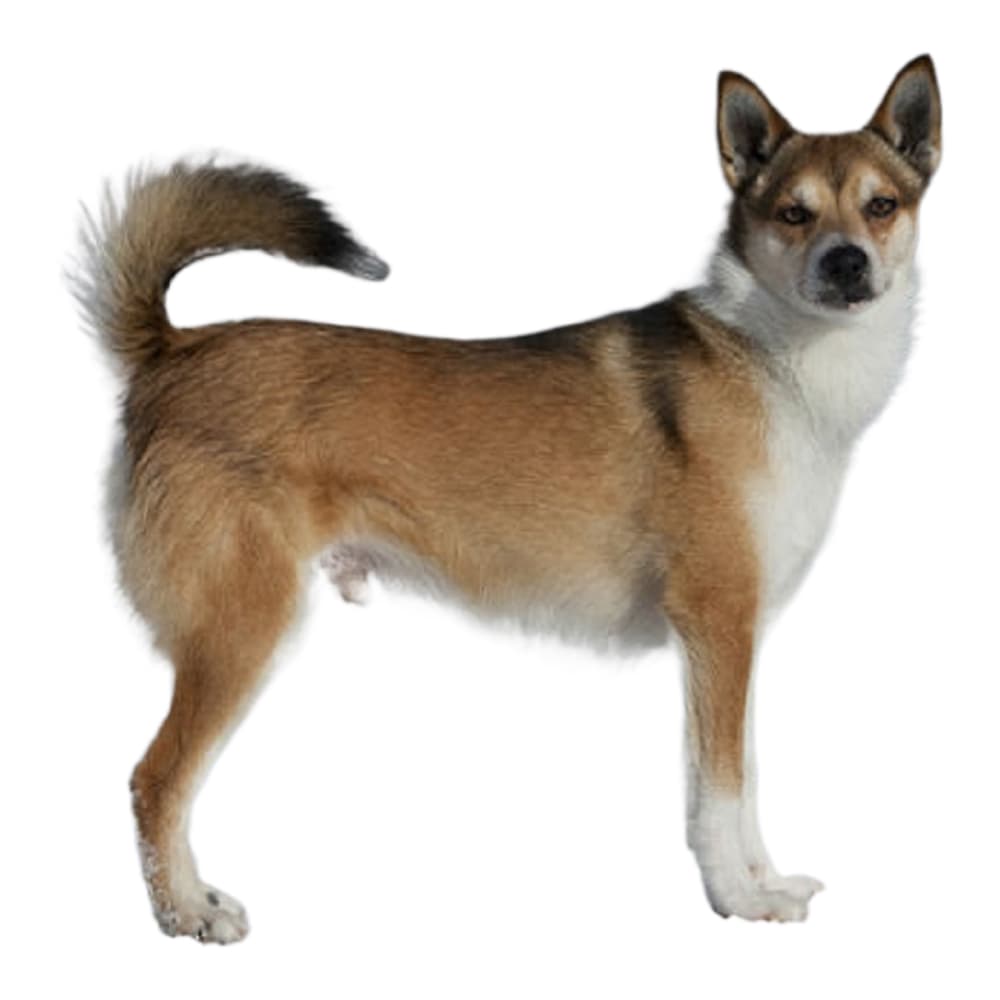Discover your dog's connection to this breed and 200+ others


Discover your dog's connection to this breed and 200+ others



The Norwegian Lundehund, also known as the Norsk Lundehund, is an ancient dog breed that originated on the remote islands of Norway, particularly the Lofoten Islands. The breed's exact history is shrouded in mystery, but it is believed to have been developed as a specialized puffin hunter. The Lundehund's unique physical features, such as the ability to bend its head backward, extra toe on each foot, and flexible joints, allowed it to excel in navigating the treacherous cliffs and narrow crevices where puffins nested. The breed faced near-extinction in the mid-20th century, but dedicated breeding efforts helped to preserve and revitalize the Lundehund population.
Inherited health conditions associated with the Norwegian Lundehund include atrophic gastritis, follicular dysplasia, gastric carcinoma, lymphangiectasia, patellar luxation, protein-losing enteropathy, and small intestinal bacterial overgrowth (SIBO). Lundehund syndrome is an inherited disease of the stomach and intestines that results from a mutation in the LEPREL1 gene. Genetic testing can assist veterinarians with diagnosis and proactive care, as well as help breeders identify affected and carrier dogs.
Norwegian Lundehunds are known for their curious and independent nature. They are alert, intelligent, and have a strong prey drive. Due to their history as puffin hunters, they may have a tendency to chase small animals. They can be reserved with strangers but are typically loyal and affectionate with their family. Early socialization and training are essential to ensure they grow into well-mannered pets.
A canine genetic lineage is a group of individuals or entire breeds that descended from common ancestors predating modern breed formation. Often these lineages are associated with a ‘type’ of dog with a unique historical working role and associated behaviors (e.g., herding, scent hunting, etc.).
Spitz and Sled Dogs originate in the Arctic and subarctic regions which caused them the develop adaptations to cold climates. Some of these adaptations give rise to characteristics of the lineage, most notably a dense double coat that helps with insulation. The lineage of these dogs can be followed back to ancient breeds developed by Indigenous people. These ancient breeds were used as an aid for transportation, herding, guarding, and hunting. These jobs have created dogs that are independent, intelligent and have strong work ethics as well as a sturdy body that helps them to pull sleds or go on long journeys over rough terrain.
Example breeds with ancestry from this lineage include Akita, Chow Chow, and Siberian Husky.
The Norwegian Lundehund's unique physical features, including six fully functional toes on each foot, allow it to climb steep cliffs and squeeze into narrow crevices with ease.
They have an exceptional range of motion in their shoulder joints, enabling them to bend their head backward to touch their spine.They can also fold their ears closed, backward, or forward at will.
The Lundehund was recognized by the FCI in 1943 but didn't gain recognition by the AKC until 2008.
Due to their historical isolation, the breed's population dwindled to a critical low of only six dogs during World War II.
The Lundehund's ancient origins make it one of the rarest and most unique dog breeds in the world.
https://www.akc.org/dog-breeds/norwegian-lundehund/ https://www.petmd.com/dog/breeds/c_dg_norwegian_lundehund https://www.fci.be/en/nomenclature/NORWEGIAN-LUNDEHUND-265.html https://www.ukcdogs.com/lundehund
Recommended by top vets with decades of experience
21 breeds
64 genetic health markers
50 genetic trait markers
